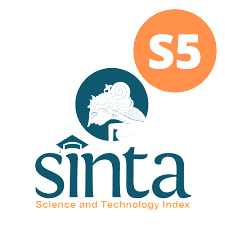Submissions
Submission Preparation Checklist
As part of the submission process, authors are required to check off their submission's compliance with all of the following items, and submissions may be returned to authors that do not adhere to these guidelines.- Penyerahan belum diterbitkan sebelumnya, atau sedang dalam pertimbangan jurnal lain (atau sebuah penjelasan belum disediakan dalam komentar kepada editor).
- File naskah dalam format file dokumen OpenOffice, Microsoft Word, RTF, atau WordPerfect.
- Ketika tersedia, URLs untuk referensi telah disediakan.
- Teks 1 spasi; font 12; italic; tidak digaribawahi (kecuali alamat URL); dan semua ilustrasi, figur, dan tabel yang ditempatkan di dalam teks pada poin yang tepat, jangan di akhir.
- Teks yang mematuhi persyaratan mengenai perpustakaan dan gaya bahasa digambarkan secara garis besar di Petunjuk Penulis, yang akan ditemukan dalam halaman Tentang Kami.
- Jika penerimaan untuk bagian peer-review dari jurnal, instruksinya terdapat di Memastikan Reviewer Anonim telah diikuti.
Copyright Notice
Authors who publish this journal agree to the following terms:
- Authors retain copyright and grant the journal right of first publication with the work simultaneously licensed under a Creative Commons Attribution License that allows others to share the work with an acknowledgment of the work's authorship and initial publication in this journal.
- Authors can separately make additional contractual arrangements for non-exclusive distribution published by the journal (e.g., publish it in a book), with an acknowledgment of its initial publication in this journal.
- Authors are allowed and encouraged to send their work online (e.g., in the institutional repositories or their website) after being published by the journal.













